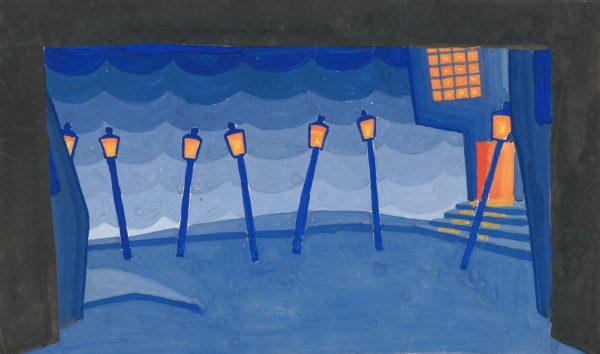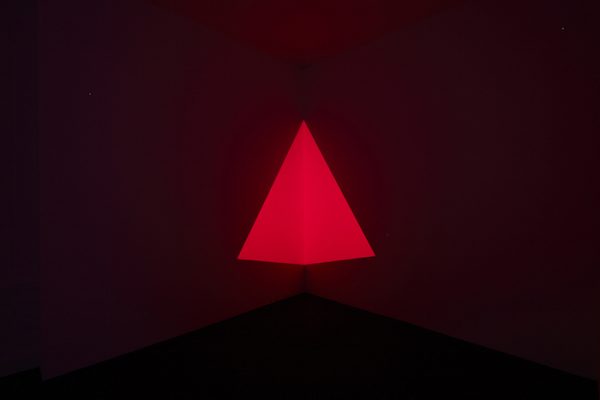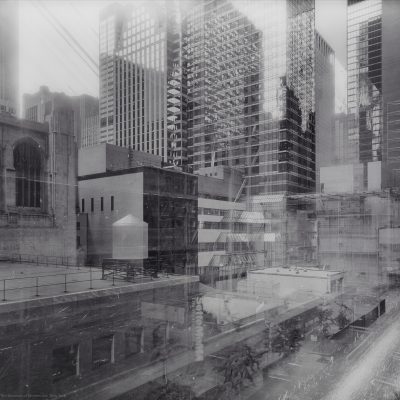1. ‘It’s kind of crazy to shop at Target, watch Netflix, drive a Honda, and still have a husband.’
Marriage falls into a specific category of things I don’t want to think about because their meaning swells the more you do. Personally, socially, historically. And yet, I am always interested in love stories: I listen to my friends talk about their love lives and when they apologise for dwelling on something – ‘is this boring?!’ – I answer, ‘love is the subject.’ I am interested in how we organise our lives by connection with other people, in how we live alongside others, in how love is a social construct and a form of relation. Love is the subject, by which I mean, love is something we want to narrate and discuss, because words make this inexplicable and incomprehensible thing – other people – feel less ambiguous, perhaps closer to certainty.
I don’t mean to conflate marriage and love. Quite the opposite – it is marriage’s function as an organising logic that I fear, that I believe does not work for anyone (especially not women). When I speak of marriage, it is not love I think of, but power. I think about Phyllis Rose discussing this in the introduction to Parallel Lives: Five Victorian Marriages (1983): ‘When we resign power or assume new power, we insist it is not happening and demand to be talked to about love. Perhaps that is what love is – the momentary or prolonged refusal to think of another person in terms of power.’ But power is impossible to sidestep. A page later: ‘Who can resist the thought that love is the ideological bone thrown to women to distract their attention from the powerlessness of their lives?’
Perhaps it is due to this ‘ideological bone’ that I am writing about marriage when what I’m really interested in is love. I am not confusing the two as much as recognising what Devorah Baum delineates in the introduction to On Marriage, that ‘marriage is so fundamental to shaping our ideas about what it means to get attached that one often finds it involved when thinking about all manner of other attachments as well.’ Despite being so persistent, marriage is actually little explored in philosophy, writes Baum, an author and professor of English literature, who has also collaborated with her filmmaker husband Josh Appignanesi on directing two documentaries focused on their own partnership, The New Man (2016) and Husband (2022). The book on matrimony was not her idea, she explains in the first line: ‘someone eligible proposed it to me and I said yes.’ The book explores marriage from multiple angles, legal and political, social and narrative, its interminability and its dailiness. Working against the fact of marriage being largely ignored as a subject of philosophy, Baum attempts to fill some of this gap in discourse through a close reading of marriage in culture.
Romeo and Juliet and Fiddler on the Roof; Lena Dunham’s Girls and the television adaptation of Sally Rooney’s Normal People; Slavoj Žižek; Mystic Pizza, the Before Sunset trilogy by Richard Linklater and multiple other romcoms, including Nora Ephron’s novel Heartburn and, of course, When Harry Met Sally…; Norman Rush’s Mating (the book given to me by a friend after a breakup as a way of seeing how impossible it is to make sense of love); Roland Barthes’s A Lover’s Discourse (the book recommended to me by a university professor when I was 20 years old with the promise that it would make me never want to fall in love again [I wish it had]); novels by Javier Marias and Buchi Emecheta; Ingmar Bergman’s television miniseries Scenes from a Marriage. This is an incomplete list of the cultural objects Baum writes about, exploring representations and considerations of marriage, in most of which she finds more that reflects contemporary life than one might assume. Take Romeo and Juliet, for example. Baum argues that the play’s lasting role in culture is evidence that readers recognise the teenage lovers as modern – they want to see the tragedy as related to the world they know. For culture to mirror our experiences, to teach us something about our lives, we have to read its products with modern eyes. So, when Baum writes about Fiddler on the Roof, the 1960s musical set in a Russian Jewish shtetl at the beginning of the twentieth century, it still feels like a poignant reflection on why we marry. The main character, Tevye the Dairyman, describes a young couple as ‘too happy to know how miserable they are’. Baum adds: ‘It’s precisely the sort of nostalgic line that informs more on our reality than it does on [Tevye’s eldest daughter] Tzeitel’s’. When Baum explores representations of marriage with an eye to knowing how things turn out – by which I mean, how marriage is still pervasive, how the institution hasn’t updated much beyond the concession that it fails half the time – it can be funny or tragic or both. ‘Marriage’, she writes, ‘may be one of the only things most people do that they vow, on point of entry, not to get out of alive.’
And while our lives have changed so much, marriage has remained pretty constant, which is why Baum’s examples can move from a Jewish shtetl to Dunham’s Brooklyn and feel consistent, related. In Wedding Toasts I’ll Never Give, her actually very open-eyed celebration of marriage, writer Ada Calhoun quotes a conversation with the poet Sparrow, who says, ‘It’s kind of crazy to shop at Target, watch Netflix, drive a Honda, and still have a husband – just like females did in the eleventh century. It’s a completely antiquated setup, but no one can think of another one. Or, rather, lots of people can think of many other ones, and they all seem to work well for about two and a half years. Then they collapse.’
How do we talk about an unchanging, hard-to-imagine-differently, often dysfunctional structure? Baum’s methodology is to look at what is missing – a philosophy of marriage, a clear idea of what this dominant structure is and how it influences lives – and try and delineate its general shape (if it’s impossible to reach a singular definition) through its representation in culture.
2. ‘When I say loved one, I mean co-watcher.’
When it first aired in Sweden in 1973, Scenes from a Marriage was so popular there are accounts describing how the streets of Stockholm were empty on Wednesday evenings because everyone was home watching Ingmar Bergman’s opus about the slow cracks forming in the marriage of Johan and Marianne. The divorce rate in Sweden rose from 2 percent in 1973 to 3.3 percent the following year, and Bergman was held responsible for a spike in divorces across Europe as well. I imagine of all those couples staying in to watch another couple disintegrate while sitting next to each other. I don’t mean this as an ill-starred omen, it’s just that in my contemporary experience, I think of watching television series as the domain of coupledom, one of the foremost iterations of being in a relationship today.
I don’t watch television. When people talk about shows and I say I haven’t seen them, they ask about my stringent anti-TV attitude. The real reason I don’t watch television is I watch so much sport, if I added television series on top of that I wouldn’t have time to go to the pub, read a book or ever work. But the jokey answer I give is, ‘I’ve already been married.’ By which I mean, when my ex-husband and I ran out of stuff to talk about, we would discuss what nonsense we’d watch on Netflix, then fall asleep while watching it.
It’s been a little while since I was married and I believe streaming culture has gotten more interesting. I now almost wish I did watch some things: made-for-Netflix movies like Noah Baumbach’s Marriage Story and Sam Levinson’s Malcolm & Marie, or the remake of Scenes from a Marriage for HBO. While it feels like a surplus of divorce films I am listing here, and while of course the idea of a couple divorcing, as they do in Bergman’s series, is no longer revolutionary, it still feels like a story that is hard to watch. Both emotionally and factually: I have looked for divorce books, films, television series. They exist, but not as much as the will-they-make-it romcoms (spoiler alert: they do! And then there isn’t a representation of when they don’t). On top of that, very few of the examples I found follow an experience similar to the one I had: I married young, divorced still young, we had no children or property, few of the markers of marriage as a form of adulting, of adjusting to social expectations. I resented people who treated my divorce like a glorified breakup because it lacked the divorce-court material; I resented people who told me they understood what I was going through because their parents divorced when they were twelve. There’s something teenager-like about feeling like no one else has ever gone through what you’re experiencing. It’s not true, of course not, but somehow when it happened to me that is how it felt. There were few cultural representations of my experience, and this remains true: I am writing about a book called On Marriage, when what I was really looking for was a book on divorce.
When I look for cultural representations of my experience, of course I want to see that I am not alone in it all, but also, it doesn’t have to be a day-to-day account of a breakdown. I am interested in the rigour of On Marriage, how it’s also not exactly personal but still definitely probing. Baum has a clear penchant for cultural critique – her reading of Mystic Pizza is as attentive as her accounts of feminist theory – nor does she shy away from her own life as material. She mentions her husband and her marriage often, but the book does doesn’t feel particularly intimate. The problem the book circles around is how to chronicle a form of relation rather than rely on Baum’s own experience to define it. Also, she’s been personal elsewhere. In the two films Baum codirected with her husband, it’s Baum and Appignanesi’s relationship that the camera is directed at.
In a double interview with Hisham Matar for Granta after The New Man came out, Appignanesi describes how their process involves acting and reenacting their lives: ‘In the film Devorah plays the role of the reluctant, long-suffering wife, and she actually was that person too. The arguments between us in the film were necessarily re-enacted because if you bring out a camera during an argument it’s an escalation, it’s no longer the same argument. But they were arguments we’d just had, almost verbatim. I had to drag her into it, she resisted it, but her resistance also became part of it.’ Watching the films, it’s clear Appignanesi is happy to press on certain aspects of his personality to match certain clichés of marriage, in which he is the man-child who cannot match his wife’s emotional maturity but owns up to it. The exaggerated nature of their roles allows for The New Man and Husband to seem a little bit less documentary, a bit closer to fiction, as if the jokey tone or the acknowledgement of the amplification of the couple’s roles makes for a tiny removal from reality.
Is it reality we want to watch? A few years ago, Appignanesi wrote an opinion piece for the Guardian about how, in this ‘golden age of binge-watching’, he misses cinema. It’s largely a discussion of the aesthetic accomplishment of some of the prestige TV shows that everyone is discussing, while also bemoaning their similarities. The piece starts with my biggest fear: Netflix. ‘If you’re anything like me, what shared emotional life you might still have is mostly achieved by mainlining shows on a streaming service with your loved one perched on the sofa nearby. When I say loved one, I mean co-watcher.’ This is why I’m scared of streaming: co-watcher, not lover. But when I joke about not watching television I am also saving myself from admitting I have no foothold in the world of couples.
Baum’s book has a section titled ‘marriage as entertainment’ and it opens with a chapter on ‘co-watching’ (she, too, cites that line by her husband, probably with less discomfort than I do). In a book that finds a reflection of many of its ideas in George Eliot’s 1871 novel Middlemarch, this section feels awfully contemporary, with Baum identifying that marriage and television are bound to each other because together they ‘can provide us with the most compelling picture of normality’. And marriage is nothing if not a normalising force.
3. ‘War may be less contentious.’
As someone who only attempted marriage for a few years, I wonder how qualified I am to speak about it. And so, as part of my research, I do another thing I don’t like doing and watch television, specifically Couples Therapy, the television show documenting the couples therapy sessions of four couples with psychoanalyst Dr. Orna Guralnik. It’s real and it’s entertaining, still, the couples included and their conflicts are not that surprising, countering the Anna Karenina principle that happy families are all alike and every unhappy family is unhappy in its own way. I watch these couples fight about who does the dishes and a white board with family duties and time spent with the children and not having sex and I think, well, I’ve heard it all before. (For someone who claims to be interested in human experience and how we relate to one another, I take an awful lot of liberty, here, in flattening the experiences of couples who discuss inequality, sexual abuse, betrayal, isolation, anger and trauma. The sameness stops me in my tracks, as it seems like proof of how doomed the enterprise is. Even so, the humanity of still giving it a go feels like something worth empathising with.)
There is a glorious moment in On Marriage in which Baum sits in the office of her mother, a retired marriage counsellor, where child Devorah never went. Baum asks her mother what she learned and what stayed with her from her years of practice, and she responds: it’s always a problem of communication. This is where Fiddler on the Roof comes in again. I am not a big fan of musicals, I’ve never watched Fiddler, and there’s only one part of it that’s reached me through the ether of culture (I actually remember, it was my goyish ex-husband who told me about it) and it’s the song in which Tevye the Dairyman asks his wife, ‘Do you love me?’ In the plot, Tevye’s daughters are all of marriage age. They see how the matchmaker makes offers to them that ‘may be grim’ but are ‘undeniable’. It’s in this discussion – where Tevye, married for 25 years and having previously never questioned whether or not his marriage was a loving one, simply because it was a practical one – that Baum gives the most succinct reasoning for why marriage doesn’t work: we live ‘in a modern era where unreasonable emphasis has been placed on the shoulders of lovers to expect from each other what an entire community once used to provide’.
Here is my crisis, or my question, or my unresolved or unsolvable concern: If it doesn’t work, then why do we keep doing it?
Perhaps the answer is that something being hard doesn’t make it less worthwhile. They say of second marriages that they represent the triumph of hope over experience. Experience can be hard won; Baum writes of Dorothea Brooke in Middlemarch and her choice of husband, the Rev. Edward Casaubon, 26 years her senior, a scholar who promises (and fails to provide) a life of the mind. Baum describes Brooke’s decision to marry Casaubon as ‘an error of her imagination rather than its absence’. The stakes for Dorothea are so high: when her husband dies his will stipulates she will lose her inheritance if she marries the man Casaubon suspects she loves. She has no options: financial, personal, social. She definitely can’t divorce. Her lack of options, historically true for all couples but described often as the problem of women, is no longer true for most. Baum writes that she recognises how ‘divorce – the threat of it, the promise of it – plays an unspoken part’ in her marriage. But not a part people would care to discuss. Baum describes how trying to bring up the subject of marriage in company, with friends and acquaintances, is fraught. ‘War may be less contentious’.
Contention is built into marriage. And divorce – that is, conflict and the sense of an option; that is, ‘the threat of it, the promise of it’ – often demonstrates to the separating couple, Baum writes, just ‘how married they helplessly are’. And also: having options doesn’t make them very good options. Rachel Cusk in Aftermath: On Marriage and Separation describes preparing to spend the day with a man she calls Z, tidying up the house, buying flowers, making lunch (it all reeks of Mrs. Dalloway, I know), ‘like a small country advertising itself for invasion’. Of course, the war metaphor is why I cite this. Of course, I also do so because I read other women’s accounts of life-after-marriage with a vested interest I cannot shake.
4. And then, there’s the epilogue
In the introduction, Baum writes, ‘marriage – as the quintessential philosophical novelist George Eliot once claimed with regard to her major marriage epic, Middlemarch – is nothing if not a practical way of finding out what love is.’
What do I know about marriage? I have a those-who-can’t curiosity about the subject, and a sense that I look to art and culture as a way of making sense of the world, perhaps even for a suggestion of (if possible) optimism. There is one conclusion in particular I will take from reading Baum’s book: ‘the one constant I’ve noticed that marriage does seem unusually good for, both in theory and in practice, is playing host to contradictions.’ I say that marriage doesn’t work for anyone, but walking into contradictions feels like a worthwhile human endeavour. I’m not saying I will marry again, but I am willing to look at the establishment with a conciliatory tone. Not because I need it to work (for me or for others) but because in the history of people attempting connection with one another, marriage is the narrative Eliot, Shakespeare, Bergman et al. have dealt with.
And then, there’s the epilogue to Baum’s book. It’s sweet, but not sweet in the way one would expect from a book called On Marriage. Baum considers a poem by Nick Laird, ‘Epithalamium’, which she reads gorgeously: ‘he and his wife are represented by a series of improbable metaphors’ that ‘would render them absurd if it wasn’t for the fact that they do seem to make a strange sort of sense because of the way they gather all their meaning from their proximate relation to each other’. In the margins of my copy, I scribble, ‘oh, that is lovely <3’. Then I find and read the poem (it was published in the New Yorker in 2011) and can immediately tell: those metaphors are a series of inside jokes, the poem a privileged view into the things that only a couple see with regards to how they relate to the other (‘And I am menthol and you are eggshell. / When you’re atrocious I am Spellcheck’). Imparting all this attention on to something (here: memories, the day-to-day next to another person) is a form of love. And I already said: love is the subject.




